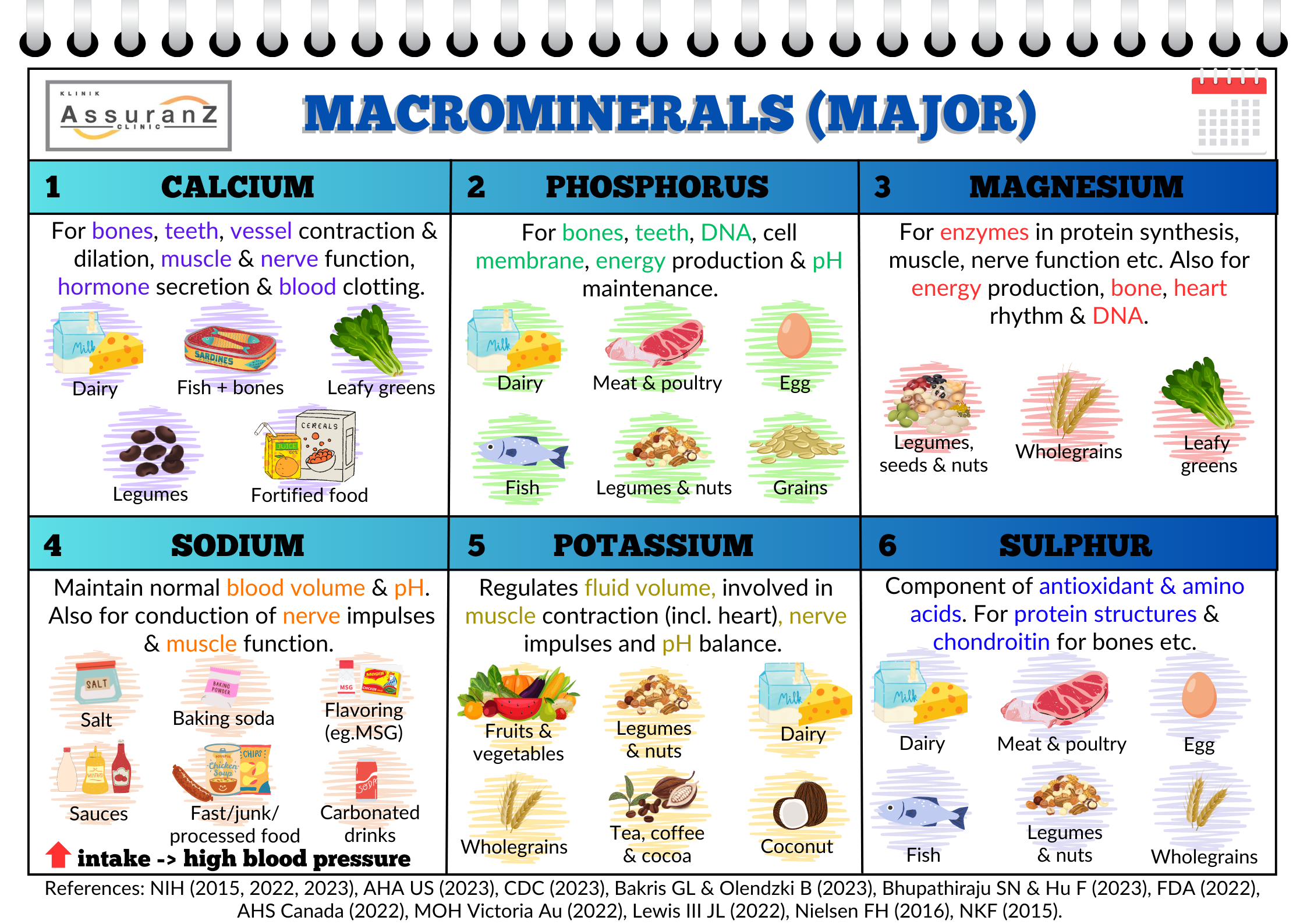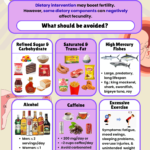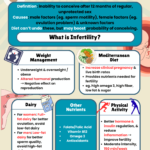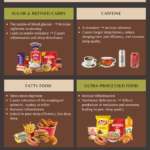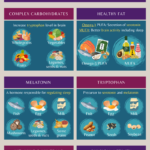Previously, we talked about vitamins, the micronutrient essential for multiple body function. This time, we will delve into the topic of another micronutrient, known as minerals. Similar to vitamins, minerals are nutrients needed by the body in small amount but are important in a variety of biochemical functions.
在这之前,我们讨论过维生素。维生素是多种身体功能必需的微量营养素。这次,我们将深入讨论另一种微量营养素 — 矿物质。与维生素类似,矿物质是人体所需的少量营养素,但它们对多种生化功能很重要。
There is a wide array of minerals, but generally, minerals can be categorized into two. They are macrominerals (or major minerals) and microminerals (also known as trace minerals). This categorization is not based on the relative importance or physiological functions. Rather, it depends on the required amount of daily intake. In this article, we will discuss on macrominerals, the roles and the sources.
矿物质的种类繁多,但一般来说,矿物质可分为两类。它们是常量矿物质(或主要矿物质)和微量矿物质。这种分类不是基于相对重要性或其生理功能。相反,这取决于每日所需的摄入量。在本帖中,我们将讨论常量矿物质、其作用和来源。
Macrominerals are minerals needed in a larger amount, typically at levels higher than 100 mg/day. These minerals include calcium, phosphorus, magnesium, sulphur, sodium, and potassium.
常量矿物质是指需要量较大的矿物质,通常含量高于100毫克/天。这些矿物质包括钙、磷、镁、硫、钠和钾。
- Calcium / 钙
Calcium makes up most structure of the bones and teeth. It is also required for blood vessel contraction and dilation, muscle function, nerve transmission, hormone secretion and blood clotting. Inadequate calcium can cause bone diseases, namely osteoporosis (porous bone) in adults, rickets (defective mineralization of growth plate) in children and osteomalacia (soft bone). Dietary sources of calcium include dairy products, fish with edible bones, some vegetables such as leafy greens, broccoli and okra, legumes and their products (such as tempeh), and fortified foods. Excessive calcium normally occurs only due to diseases such as bone cancer and hyperparathyroidism, but rarely is due to overconsumption alone. In healthy individuals, side effects of excessive calcium may include kidney stones, milk-alkali syndrome, and reduced absorption of minerals such as iron, zinc, magnesium, and phosphorus. Hypercalcemia and hypercalciuria (not common in healthy individuals) can cause poor muscle tone, weight loss, renal insufficiency, irregular heartbeat and higher CVD mortality.
钙构建了骨骼和牙齿的大部分结构。血管收缩和扩张、肌肉功能、神经传递、激素分泌和血液凝固也需要它。钙不足会导致骨骼疾病,即成人骨质疏松症(多孔骨)、儿童佝偻病(生长板矿化缺陷)和骨软化症(软骨)。钙的膳食来源包括乳制品、带可食用骨头的鱼、一些蔬菜,如绿叶蔬菜、西兰花和秋葵、豆类及其产品(如豆豉)以及强化食品。钙过多通常仅由骨癌和甲状旁腺功能亢进等疾病引起,但很少是单独因摄入过多而引起。对于健康的人来说,过量钙的副作用可能包括肾结石、奶碱综合症以及铁、锌、镁和磷等矿物质的吸收减少。高钙血症和高钙尿症(在健康的人中不常见)可导致肌张力差、体重减轻、肾功能不全、心律不齐和更高的心血管疾病死亡率。
- Phosphorus / 磷
Phosphorus composes the bones, teeth, DNA and RNA, and maintains body pH. In the form of phospholipid, phosphorus makes up the cell membrane and the key energy source known as adenosine triphosphate (ATP). Phosphate group also binds with many proteins and sugars for transport, energy production and cellular function. Phosphate deficiency is rare, and mostly is due to medical conditions such as diabetic ketoacidosis and hyperparathyroidism. Deficiency can cause anorexia, anaemia, muscle weakness, increased infection risk, bone disease and neurological symptoms such as confusion. Dietary sources of phosphorus are dairy products, meat, poultry, egg, fish, nuts, legumes, and grains. Absorption is the highest in food added with phosphorus additives and is higher in animal products than in plant. Excessive phosphorus intake is unlikely in general population. However, it is associated with gastrointestinal symptoms such as diarrhoea and nausea in excessive supplementation. Dysfunction in blood phosphorus regulation which cause hyperphosphatemia especially in conditions such as chronic kidney disease can lead to increased risks of cardiovascular disease including atherosclerosis, and bone fracture.
磷构建骨骼、牙齿、脱氧核糖核酸(DNA)和核糖核酸(RNA),并维持身体pH值。磷以磷脂质的形式构成细胞膜和称为三磷酸腺苷 (ATP) 的关键能量来源。磷酸基还与许多蛋白质和糖结合,以促进运输、能量产生和细胞功能。磷酸盐缺乏症很少见,主要是由于糖尿病酮症酸中毒和甲状旁腺功能亢进等疾病所致。缺乏会导致厌食、贫血、肌肉无力、增加感染风险、骨骼疾病和精神错乱等神经症状。磷的膳食来源是乳制品、肉类、家禽、蛋、鱼、坚果、豆类和谷物。富含磷添加剂的食品中吸收率最高,动物产品中的吸收率高于植物中的吸收率。一般人群不太可能摄入过多的磷。但过量补充磷会引起腹泻、恶心等胃肠道症状。血磷调节功能障碍会导致高磷血症,尤其是在慢性肾病等情况下,可能会增加心血管疾病的风险,包括动脉粥样硬化和骨折。
- Magnesium / 镁
Magnesium is involved in enzyme systems responsible in biochemical reactions including protein synthesis, muscle and nerve function, blood sugar control, and blood pressure regulation. It is also needed for energy production, bone development, heart rhythm, DNA and RNA synthesis. Magnesium deficiency is uncommon, but if it does happen, can cause loss of appetite, nausea, vomiting, and fatigue. As it worsens, it can lead to numbness, muscle cramps, seizures, abnormal heart rhythm and coronary spasm. Magnesium generally can be obtained through consumption of dietary fibre such as seeds, nuts, legumes, green leafy vegetables, and wholegrain. High magnesium intake from food in healthy individuals does not pose a health risk, but excessive supplementation can cause diarrhea, nausea and abdominal cramp. In certain condition such as renal failure or impairment, excessive magnesium can cause hypotension, urinary retention, muscle weakness, depression and irregular heartbeat.
镁参与负责生化反应的酶系统,包括蛋白质合成、肌肉和神经功能、血糖控制和血压调节。它也是能量产生、骨骼发育、心律、脱氧核糖核酸(DNA)和核糖核酸(RNA) 合成所必需的。镁缺乏并不常见,但如果确实发生,会导致食欲不振、恶心、呕吐和疲劳。随着病情恶化,可能会导致麻木、肌肉痉挛、癫痫发作、心律失常和冠状动脉痉挛。镁通常可以通过食用膳食纤维获得,例如种子、坚果、豆类、绿叶蔬菜和全谷物。健康的人从食物中摄入高镁不会构成健康风险,但过量补充会导致腹泻、恶心和腹部痉挛。在某些情况下,例如肾功能衰竭或受损,过量的镁会导致低血压、尿潴留、肌肉无力、抑郁和心律不齐。
- Sodium / 钠
Sodium is important in keeping the body fluid in balance by maintaining normal blood volume and pH. It is also required in conduction of nerve impulses and muscle function. Deficiency of sodium is rare, and normally is due to medical conditions such as kidney failure and congestive heart failure, but in severe cases, it can manifest symptoms such as nausea, confusion, low blood pressure, weakness, muscle cramps and seizure. Sodium occurs naturally in food including celery and milk, but in our diet, it mainly comes from table salts (sodium chloride), other common forms such as sodium bicarbonate (in bakery goods et cetera) and MSG, processed, pre-prepared food and even drinks such as carbonated drink. Excessive sodium intake can lead to high blood pressure, higher risk of stroke and coronary heart disease.
钠对于维持正常的血容量和pH值来保持体液平衡很是重要。神经冲动的传导和肌肉功能也需要它。钠缺乏很少见,通常是由于肾衰竭和充血性心力衰竭等疾病引起的,但在严重的情况下,可能会出现恶心、意识模糊、低血压、虚弱、肌肉痉挛和癫痫等症状。钠天然存在于食物中,包括芹菜和牛奶,但在我们的饮食中,它主要来自食盐(氯化钠)、其他常见形式,例如碳酸氢钠(烘焙食品等)和味精、加工食品、预制食品,甚至饮料(例如碳酸饮料)。摄入过多的钠会导致高血压、中风和患上冠心病的风险增加。
- Potassium / 钾
Potassium regulates fluid volume and is involved in muscle contraction (including the heart), nerve impulse conduction and acid base balance. Inadequate potassium intake in general can cause increased blood pressure, kidney stone risk, urinary calcium excretion, and increased salt sensitivity. Potassium can be obtained in a wide variety of food. Leafy greens, legumes, nuts, dairy foods, fruits (including coconut) and starchy vegetables are rich sources. Other sources include wholegrain and brans, meat, poultry, fish, coffee, tea and cocoa. In healthy individuals with functional kidneys, high potassium intake does not pose any health risk as excess potassium are eliminated in the urine. However, in those with impaired kidney function or those on certain medications such as potassium-sparing diuretics, high intake can cause hyperkalemia, which, in severe cases, can lead to muscle weakness, paresthesias, paralysis, and irregular heart rhythm which can lead to death.
钾调节体液量并参与肌肉收缩(包括心脏)、神经冲动传导和酸碱平衡。一般来说,钾摄入不足会导致血压升高、肾结石风险、尿钙排泄和盐敏感性增加。钾可以从多种食物中获取。绿叶蔬菜、豆类、坚果、乳制品、水果(包括椰子)和淀粉类蔬菜都是丰富的钾来源。其他来源包括全麦和麸皮、肉类、家禽、鱼类、咖啡、茶和可可。对于肾脏功能正常的健康的人来说,高钾摄入量不会造成任何健康风险,因为过量的钾会通过尿液排出。然而,对于肾功能受损或服用某些药物(如保钾利尿剂)的人来说,高钾摄入会导致高钾血症,严重时会导致肌肉无力、感觉异常、瘫痪和心律失常,从而导致死亡。
- Sulphur / 硫
Sulphur is among the component of glutathione peroxidase (antioxidant), and amino acids methionine and cysteine, which are involved in the production of key metabolic intermediates necessary for life. Sulphur is incorporated in protein structures such as keratin for hair, and aids in synthesis of chondroitin in bones and cartilages, heparin, and insulin. To date, there are no known risks of sulphur deficiency except in cases of extreme protein deprivation. Dietary sources of sulphur mostly are from food that has sulphur-containing amino acid including dairy products, fish, meat, poultry, egg, legumes, nuts and wholegrain. Other high sulphur foods are cruciferous vegetables, allium vegetables, raspberries. Excessive dietary sulphur intake in healthy individuals rarely has any effects, but excessive supplementation can cause headache, dizziness, drowsiness, nausea and vomiting, diarrhea, or constipation.
硫是谷胱甘肽过氧化物酶(抗氧化剂)以及氨基酸蛋氨酸和半胱氨酸的成分之一,它们参与生命必需的关键代谢中间体的产生。硫融入蛋白质结构中,例如头发的角蛋白,并有助于骨骼和软骨中软骨素、肝素和胰岛素的合成。迄今为止,除了极度缺乏蛋白质的情况外,尚无已知的缺硫风险。硫的膳食来源主要来自含有硫氨基酸的食物,包括乳制品、鱼、肉、家禽、蛋、豆类、坚果和全麦。其他高硫食物有十字花科蔬菜、葱属蔬菜、覆盆子。健康人从膳食中摄入过量的硫很少有任何影响,但过量补充会导致头痛、头晕、嗜睡、恶心呕吐、腹泻或便秘。
How about microminerals? What are the functions and sources of trace minerals? We will discuss more on this topic on our next article.
微矿物质又是什么呢?微量矿物质的作用和来源有哪些?我们将在下一篇文章中详细讨论。

